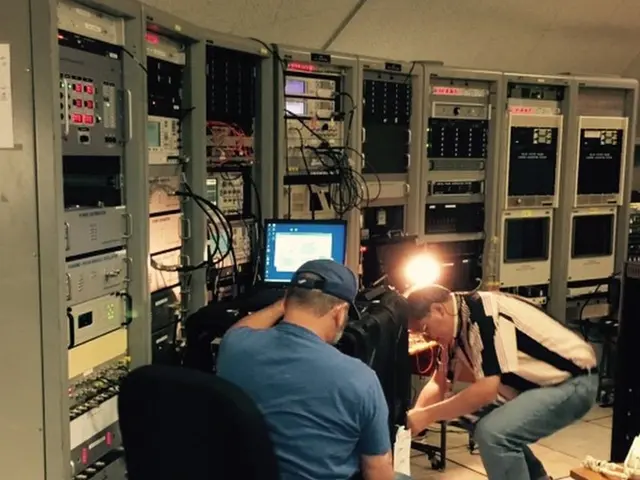Agile Air Quality Device, AqMood, Offers Unique Approach to Monitoring Atmosphere's Condition
Cracking down on poor air quality at home? Then it's high time your monitoring equipment stepped up its game! If you're breathing in harmful VOCs or dust, those little blinking LEDs just aren't cutting it. Enter Tobias Stanzel's ingenious creation, the AqMood, designed to offer a human-friendly take on environmental data collection.
Sure, the AqMood still sports a slew of LEDs - thirteen, to be exact, housed within a 3D printed diffuser. They're strategically arranged such that each section can represent distinct particulate, VOC, and CO2 levels. But what truly sets this project apart is the 1.8-inch LCD screen nestled beneath the LEDs. This display showcases a variety of emojis that reflect the current conditions. Hopefully, you'll see a trifecta of smiley faces, but if you spot a sneaky side-eye, it's probably time to shoot the windows open. If you need more specific data, you can easily switch to a more scientific mode, displaying bar graphs and exact numbers…but where's the fun in that?
Not only has Tobias shared all the necessary files and build instructions, but he's also thrown in some helpful screenshots to guide you through the firmware flashing process for the XIAO Seeed ESP32-S3 heart of the AqMood.
If you prefer your AQ monitoring to be a tad less flamboyant, the folks at IKEA might have just the ticket. They're currently offering the VINDRIKTNING, an air quality sensor that detects PM2.5 particles. This baby is a hacker's dream, allowing for easy integration with smart home systems like Home Assistant, using frameworks such as ESPHome[1][4]. So, how does it stack up against a hypothetical AqMood, you ask?
IKEA VINDRIKTNING
- Hackability: A hacker's paradise! Connect this bad boy to your smart home system and tailor the device to your personal needs[1][4].
- Monitoring: Primarily focuses on PM2.5 particles, providing basic air quality data.
- Expansion: Can be linked to platforms like Adafruit IO for real-time notifications[2].
AqMood (Hypothetical)
While the AqMood is just a concept, given its anthropomorphic nature, it could potentially offer a more user-friendly or interactive experience compared to the VINDRIKTNING. However, without concrete details, it's tricky to draw a direct comparison between the two.
Key Comparisons:
- Interaction: A hypothetical AqMood might offer more personalized or interactive feedback compared to the VINDRIKTNING.
- Customization: While the VINDRIKTNING's hackability facilitates customization, it's uncertain how straightforward this would be with a hypothetical AqMood, unless specifically designed for the purpose.
In conclusion, IKEA's VINDRIKTNING is perfect for those who want to incorporate air quality monitoring into their smart home setup, while a hypothetical AqMood, should it ever make it past the concept stage, might focus on offering a more engaging user experience.
Technology and smart-home devices have been expanded with the introduction of Tobias Stanzel's AqMood, a creative solution for environmental data collection. While its LED display is reminiscent of other hardware devices, the LCD screen beneath it offers emojis representing current conditions, aiming for a more human-friendly approach. On the other hand, the IKEA VINDRIKTNING is a hackable air quality sensor that primarily focuses on PM2.5 particles, allowing for customization through platforms like Home Assistant and Adafruit IO. Both devices cater to unique preferences in technology and smart-home gadgets, offering distinct advantages in terms of interaction and customization.







